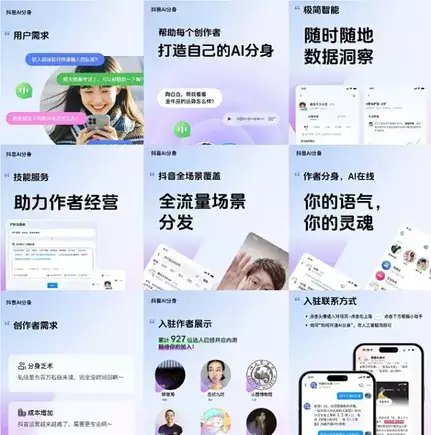The immersive potential of virtual avatars is increasingly capturing the imagination of tech giants and social media platforms. As leaders in digital interaction, companies like Meta and TikTok are taking bold steps to integrate artificial intelligence into their user experiences. This move raises critical questions about the future of social engagement: Are we witnessing a monumental shift toward virtual avatars at the expense of authenticity, or are these innovations simply a fleeting trend?
The Push for AI Avatars
Meta’s recent announcements, spearheaded by CEO Mark Zuckerberg, hint at a future heavily influenced by AI-driven content generation. With social media being an ever-evolving platform, Meta’s initiatives to develop sophisticated AI avatars suggest a departure from traditional social engagement models. By allowing creators to develop virtual personalities that mimic their real-life counterparts, Meta seeks to create a new level of user interaction. This innovative push aims not only to enhance the user experience but also to maximize creator engagement, enabling fans to connect with their favorite influencers at any time.
Meanwhile, Douyin, the Chinese counterpart to TikTok, is making strides of its own with its “V Project.” This initiative focuses on expanding live-streaming capabilities through AI-generated avatars. Unlike conventional static content, these avatars are designed to be conversational agents capable of delivering personalized experiences and recommendations. Users can interact continuously, even when the creator is offline, effectively blurring the lines between human-led and automated interaction.
Douyin’s experience in utilizing digital avatars marks a significant advantage. Their established presence in creating virtual influencers has proven successful, as evidenced by nearly a million digital avatar companies registered in China. These companies are catering to brand partnerships, capitalizing on the effectiveness of 24/7 live-streaming by virtual avatars. With such a robust infrastructure supporting digital characters, one cannot overlook the potential impact these innovations could have on global platforms like TikTok and Meta.
The introduction of AI character models in Douyin aims to enhance user engagement further. These avatars can communicate in comment streams, respond to direct messages, and participate in live chat sessions in the creators’ unique style. By offering this convenience, content creators may find it easier to concentrate on enhancing their digital presence, freeing them from the rigors of constant availability. However, it remains uncertain whether similar engagement tactics will resonate with Western audiences, who have historically shown resistance to various trends initiated in the East.
Cultural differences play an essential role in the adoption of digital innovations. Certain trends popular in China—such as extensive shopping integrations on social platforms—have struggled to gain traction in the U.S. Consequently, the question arises: will Western consumers embrace virtual avatars for interaction in the same way their Eastern counterparts have? The skepticism surrounding this transition reflects a broader concern for authenticity in social media interactions.
For many users, social media has historically been about genuine connections. The thought of interacting with a bot, no matter how adept it may be at mimicking human conversation, feels, at its core, like a dilution of the medium. Engaging with AI can be interesting—services like ChatGPT are compelling when used as a sounding board. However, reducing the dynamic nature of social media interactions to algorithm-driven responses falls short of fulfilling the promise of authentic engagement.
While the prospect of AI avatars might initially intrigue users due to their novelty, there is a lingering doubt regarding their long-term viability. The strong appeal of social media has always been the potential for genuine interaction; users thrive on the possibility of receiving replies from real people, not machines. The homogenized experience of conversing with a digital entity seems unlikely to satisfy the needs for engagement that social media platforms aim to fulfill.
Yet, as digital interactions evolve, a pivotal shift in consumer behavior could emerge. If the pursuit of likes, followers, and engagement surpasses the demand for authentic interaction, users may very well adapt to these new virtual avatars. There is a chance that as the digital landscape continues to develop, engaging with AI-driven avatars could be more accepted than previously thought.
As we navigate this rapidly changing digital terrain, the emergence of virtual avatars presents a double-edged sword. On one side, it offers new frontiers for creativity and interaction; on the other, it risks alienating users longing for authentic connections. The fate of virtual avatars in social media relies on user adoption and acceptance, making it essential for platforms like Meta and TikTok to tread carefully as they weave deeper into the fabric of artificial interaction in an ever-evolving digital world.


Leave a Reply